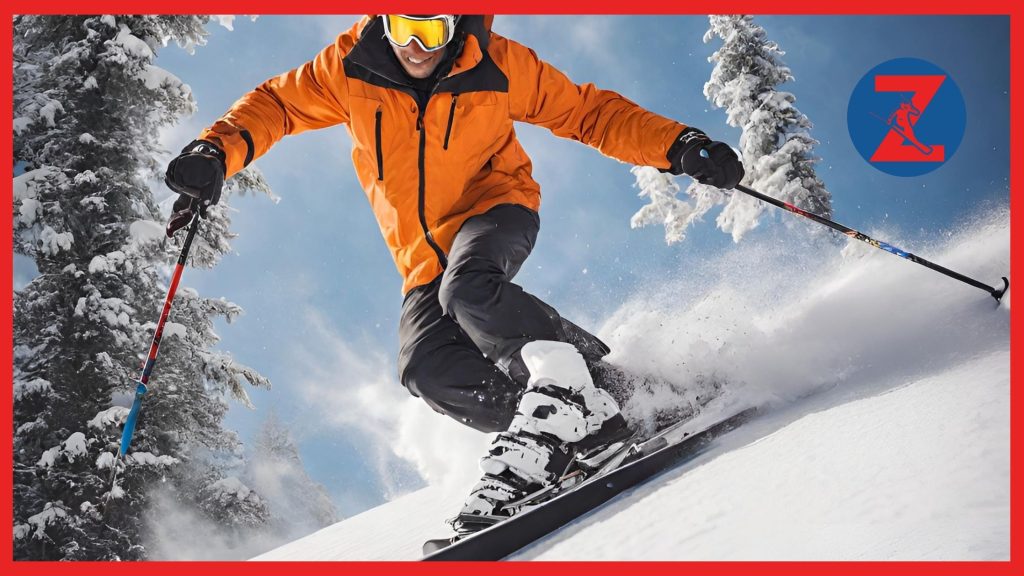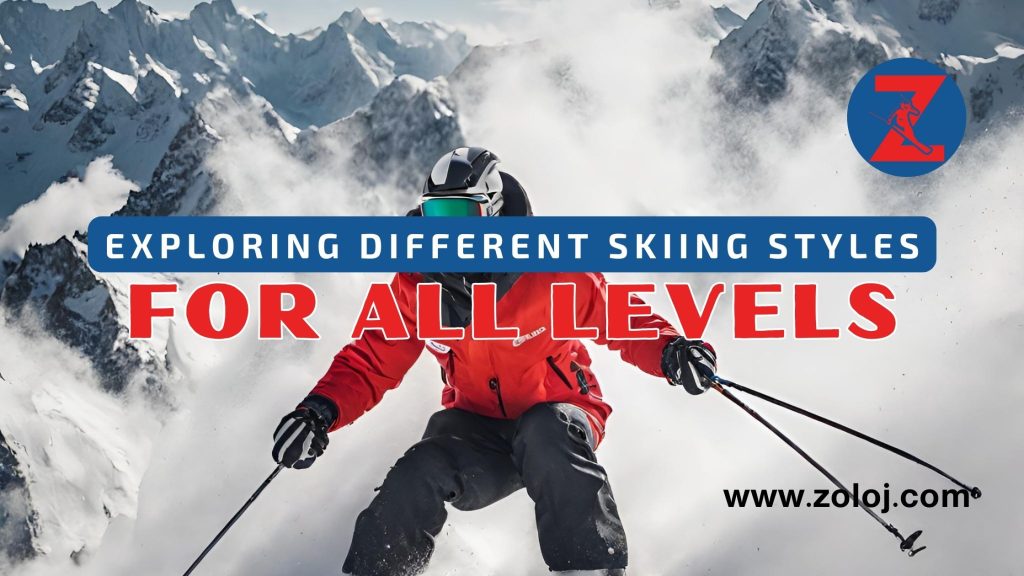Are you ready to hit the slopes but unsure which skiing style is right for you? From the adrenaline-pumping speed of alpine skiing to the gravity-defying tricks of freestyle skiing, there’s a skiing style out there for everyone. In this article, we will take you on a thrilling journey through the various skiing styles that cater to different interests and skill levels. Get ready to discover the secrets behind each style and find the perfect one to unleash your inner snow adventurer. So, which style will you choose?
Alpine Skiing: Carving the Slopes with Precision

Alpine skiing is one of the most popular skiing styles that enthusiasts across the globe enjoy. Its focus on carving turns down groomed slopes adds an exhilarating dimension to the sport. Whether you are a beginner or an experienced skier, mastering the fundamentals of alpine skiing is essential for a thrilling and safe experience on the slopes.
Fundamentals of Alpine Skiing
When it comes to alpine skiing, having the right stance is crucial. Maintaining a balanced position with your weight centered and your knees flexed allows for better control and stability. This helps you navigate the slopes with precision and reduce the risk of falls. Additionally, using appropriate equipment such as skis, boots, and poles specifically designed for alpine skiing is essential for optimal performance.
Techniques for Navigating Different Terrains
Alpine skiing offers a versatile range of techniques to conquer various terrains. From carving smooth arcs on compacted snow to engaging in dynamic short turns on steeper slopes, understanding and practicing these techniques will enhance your technique and enjoyment on the mountain.
- Carving turns: This technique involves utilizing the edges of your skis to create clean and precise turns, allowing you to glide smoothly down the slopes.
- Parallel turns: Parallel skiing involves keeping your skis parallel to each other throughout the turns, providing better stability and control.
- Mogul skiing: Moguls, or bumps, present an exciting challenge for alpine skiers. Mastering this technique involves using a combination of absorption, angulation, and rotation to navigate the uneven terrain.
By developing your skills in alpine skiing, you can experience the thrill of carving the slopes with grace and precision. Whether you’re a beginner or an expert, there is always room to refine your technique and explore new possibilities on the mountain.
| Advantages of Alpine Skiing | Disadvantages of Alpine Skiing |
|---|---|
| Offers exhilarating speed and adrenaline rush Accessible to skiers of all ages and skill levels Wide availability of alpine ski resorts Opportunity to explore diverse terrains | Requires appropriate ski equipment and gear Can be physically demanding and exhausting Risk of injuries if proper safety precautions are not followed Dependent on suitable weather conditions and terrain availability |
Freestyle Skiing: Mastering Tricks and Jumps

Freestyle skiing is a dynamic and exhilarating skiing style that combines creativity, acrobatics, and a touch of fearlessness. This section will immerse you in the thrilling world of jumps, tricks, and terrain features that define freestyle skiing.
Key Techniques for Freestyle Skiing
To succeed in freestyle skiing, you need a solid foundation of essential techniques. Here are some key skills to master:
- Spin and Rotation: Freestyle skiing often involves spinning in mid-air while executing grabs or flips. Mastering the art of controlled rotation is essential for nailing tricks.
- Grabs: Grabs are an integral part of freestyle skiing, adding style and flair to your jumps. Learn how to reach down and grab your skis or board while in the air.
- Switch Skiing: Freestyle skiers are adept at skiing and landing tricks in both regular and switch stances. Switch skiing involves skiing backward with your opposite foot forward.
- Mogul Technique: A firm understanding of mogul skiing techniques will help you navigate the challenging terrain and jumps commonly found in freestyle courses.
Safety Tips for Freestyle Skiing Enthusiasts
While freestyle skiing is thrilling, it’s important to prioritize safety to minimize the risk of injuries. Here are some tips to keep in mind:
- Warm-Up: Always warm up your muscles before hitting the slopes to reduce the risk of strains or pulls.
- Protective Gear: Wear a helmet and appropriate padding to safeguard against potential collisions and falls.
- Know Your Limits: Be aware of your skill level and avoid attempting tricks or jumps beyond your capabilities.
- Spotter and Trainer: When learning new tricks, enlist the help of a spotter or trainer for guidance and support.
| Freestyle Skiing Competitions | Date | Location |
|---|---|---|
| X Games Aspen | January 29-31, 2023 | Aspen, Colorado, USA |
| FIS Freestyle World Ski Championships | February 7-19, 2023 | Saas-Fee, Switzerland |
| Winter Dew Tour | March 2023 | Location TBA |
Backcountry Skiing: Exploring Untouched Terrain
If you crave adventure and solitude, backcountry skiing offers the perfect escape. Unlike resort skiing, backcountry skiing takes you away from the crowded slopes and allows you to explore untouched terrains and breathtaking landscapes. It’s a thrilling experience that combines the excitement of skiing with the serenity of nature.
Backcountry skiing involves skiing in uncontrolled and unmarked areas, away from groomed trails. This style of skiing requires specialized equipment and knowledge to ensure your safety in remote and challenging environments.
Essentials of Backcountry Skiing
When embarking on a backcountry skiing adventure, it’s crucial to have the right gear to navigate the rugged terrain. Here are some essential pieces of equipment for backcountry skiing:
- Avalanche Safety Gear: Carrying an avalanche beacon, shovel, and probe is critical for backcountry skiing. These tools help in locating and rescuing fellow skiers in case of an avalanche.
- Touring Skis and Bindings: Backcountry skis are designed to provide better flotation and maneuverability in deep powder. Lightweight touring bindings allow for uphill travel and easy control.
- Climbing Skins: These adhesive strips attach to the base of skis, providing grip while ascending steep slopes. They are essential for uphill travel and prevent skis from sliding backward.
- Backpack: A properly fitted backpack is necessary to carry essential gear, food, water, and extra layers. Look for a backpack with dedicated compartments for safety equipment.
- Proper Clothing: Layering is key to staying comfortable in variable weather conditions. Choose moisture-wicking base layers, insulating mid-layers, and waterproof outerwear to protect against the elements.
Safety Precautions
Backcountry skiing presents unique risks, and it’s important to prioritize safety at all times. Here are some safety precautions to consider:
- Avalanche Education: Taking a certified avalanche course will teach you how to assess avalanche risks, read terrain, and make informed decisions in the backcountry.
- Weather Monitoring: Stay informed about current weather conditions, including snowfall, wind speed, and temperature fluctuations. Look for signs of unstable snowpack and be prepared to adjust your plans accordingly.
- Travel in Groups: Skiing with a partner or a group is safer than skiing alone. In case of an accident, a companion can provide assistance and seek help.
- Communication Devices: Carrying a reliable communication device, such as a satellite phone or two-way radio, ensures you can call for help in case of an emergency.
- Leave No Trace: Respect the wilderness by packing out all trash, minimizing your impact on the environment, and following any local regulations or land-use guidelines.
Navigation Techniques
Navigating in the backcountry requires map reading skills and an understanding of topography. GPS devices and compasses can be helpful, but it’s important to have a solid foundation in navigation techniques. Here are a few tips:
- Route Planning: Study maps and guidebooks to plan your route in advance. Consider the terrain, elevation gain, and potential hazards.
- Map and Compass Skills: Learn how to read a topographic map and use a compass to navigate. Knowing how to orient the map and follow contour lines will help you find your way in unfamiliar terrain.
- Landmarks and Visual Cues: Identify prominent landmarks along your route, such as mountains, valleys, or distinctive rock formations. These visual cues can help you stay on track and avoid getting lost.
By mastering the essentials of backcountry skiing, you can embark on thrilling adventures and explore the untouched wilderness. Remember to always prioritize safety, stay prepared, and respect the environment. Now, let’s dive into the world of cross-country skiing in the next section.
Cross-Country Skiing: A Closer Look at Endurance Skiing

Cross-country skiing, also known as Nordic skiing, is a popular winter sport that combines the love for skiing with the peacefulness of nature. It involves moving across flat and varied terrains using skis and poles, providing a full-body workout and a chance to explore breathtaking landscapes. Cross-country skiing is one of the oldest skiing styles, dating back thousands of years to regions like Scandinavia, where it was an essential means of transportation during harsh winters.
Unlike downhill skiing, which focuses on speed and adrenaline, cross-country skiing is all about endurance and technique. It offers a unique opportunity to connect with nature, as you glide through snow-covered forests, meadows, and frozen lakes. Whether you’re a beginner or an experienced skier, cross-country skiing provides a challenging and rewarding experience, both physically and mentally.
There are several techniques involved in cross-country skiing, each tailored to different terrain and skill levels. Some popular techniques include:
- Classic Technique: This technique involves a forward stride and a diagonal motion of the skis. It is ideal for flat or gently rolling terrains.
- Skate Technique: Inspired by ice skating, this technique emphasizes lateral movements and is suitable for smooth, groomed trails.
- Uphill Technique: When encountering uphill sections, employing techniques like herringbone and double poling can help conserve energy and maintain traction.
- Downhill Technique: While less common in cross-country skiing, downhill techniques such as the snowplow or stem turn can be useful for controlling speed and maneuvering on descents.
To fully enjoy cross-country skiing, it’s essential to have the right equipment. The type of skis, boots, and poles you choose will depend on various factors, such as your skill level, terrain, and personal preferences. Skis designed for cross-country skiing are typically longer, narrower, and lighter than alpine skis, allowing for more efficient gliding and maneuverability.
Here are some key pieces of equipment for cross-country skiing:
- Cross-Country Skis: Designed specifically for this style of skiing, they come in a range of styles, including classic, skate, and backcountry skis.
- Bindings: Bindings attach your boots to the skis, providing control and stability.
- Boots: Cross-country ski boots are lightweight, flexible, and designed to provide comfort and support during long outings.
- Poles: The length and stiffness of poles can affect your skiing technique, so it’s important to choose the right ones for your height and skiing style.
When heading out for a cross-country skiing adventure, here are a few helpful tips to keep in mind:
- Start with shorter trails and gradually increase the length and difficulty as your skills improve.
- Warm up and stretch before skiing to prevent muscle strains and injuries.
- Stay hydrated and bring snacks to maintain energy levels during longer skiing sessions.
- Wear layered clothing to adjust for changing weather conditions and avoid overheating or getting too cold.
Whether you’re seeking a challenging workout or a peaceful escape in nature, cross-country skiing offers a fulfilling experience for outdoor enthusiasts of all ages. It allows you to explore vast snowy landscapes, improve your endurance, and appreciate the beauty of winter in a truly unique way.
Conclusion
When it comes to skiing, there is a style for everyone. Whether you are a thrill-seeker looking for speed and precision or an adventurous soul seeking tricks and jumps, the diverse range of skiing styles has something to offer. From the serene solitude of backcountry skiing to the challenging endurance of cross-country skiing, each style brings its unique set of techniques and experiences.
By exploring these different skiing styles, you can elevate your time on the slopes and discover new ways to push yourself. Whether you are a beginner learning the basics or an experienced skier looking to expand your horizons, each style offers an opportunity to carve your own path and conquer new challenges.
Remember to always prioritize safety and acquire the necessary skills and equipment for each style. Practice proper techniques, seek guidance from experienced skiers, and enjoy the thrill of mastering different skiing techniques.
FAQ
Q: What is alpine skiing?
A: Alpine skiing is a skiing style that focuses on carving turns down groomed slopes. It is one of the most popular forms of skiing and requires proper technique, equipment, and stance to navigate different terrains.
Q: What is freestyle skiing?
A: Freestyle skiing is a style that encompasses jumps, tricks, and terrain park features. It emphasizes creativity and acrobatics, and safety precautions and technique mastery are important for enthusiasts of this exhilarating skiing style.
Q: What is backcountry skiing?
A: Backcountry skiing is a thrilling style that involves exploring untouched terrain away from groomed slopes. It requires specific equipment, safety precautions, and navigation techniques to enjoy the serenity and adventure of remote areas.
Q: What is cross-country skiing?
A: Cross-country skiing is an endurance-focused style that allows you to enjoy nature while challenging your aerobic fitness. It involves efficient gliding and uphill climbing and requires knowledge of different techniques, appropriate equipment, and tips for a smooth experience.






